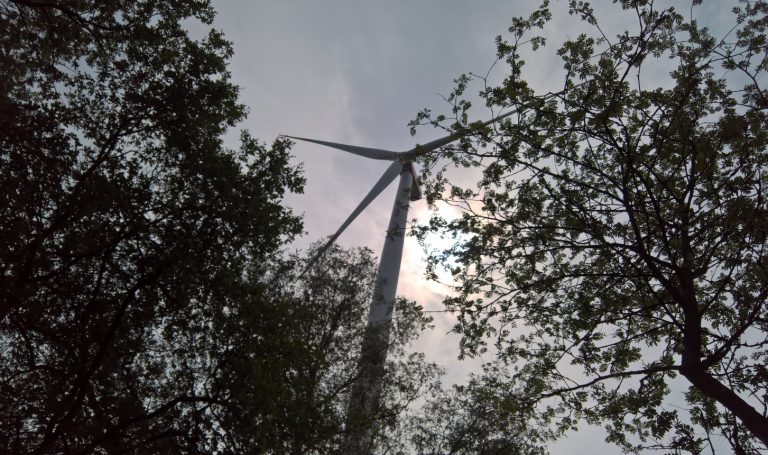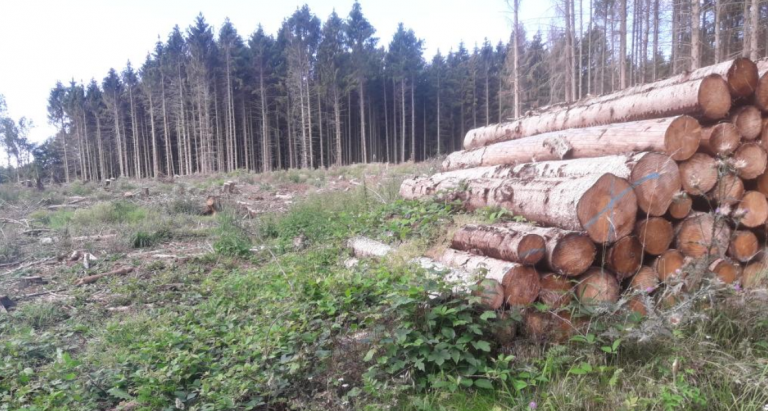Forest Degradation A Major Climatic Warming Driver, Study Finds. CO2-Induced Tree Growth Cools?
A new study published in the journal Ecological Solutions and Evidence shows that forestry management has a significant influence on the cooling capacity of forests.
The study shows why burning trees in “sustainable” biomass plants using wood chips imported from around the world and deforestation to make way for wind parks are really bad ideas. Deforestation leads to warming.
And then imagine the effect trees have in sprawling megalopolises. One could easily argue that poor urban planning has been one of the main drivers of warming over the past 100 years. See cities with the most trees here, and here.
Forest ecosystems influence climate on global and local scales, the scientists say in the new study. One important feature of forests is the regulation of ecosystem microclimate.
The original press release for the study is here.
Canopy degradation leads to warming
Shading by trees, evaporation of water, storage of heat in biomass, and energy conversion through photosynthesis cause forests to cool themselves and their surroundings during hot weather. This can prevent damaging maximum temperatures, especially during prolonged heat waves, say scientists from Eberswalde (EUSD) in the study.
The scientist responsible for the study, Jeanette Blumröder, of the University for Sustainable Development, EUSD, states, “Increased logging and a correspondingly greater opening of the canopy drive up the maximum temperatures in the forest.”
0.5°C warmer with 10% less trees
An extensive series of measurements in beech forests and pine forests in northern Germany from the heat summers of 2018 and 2019 confirm that whenever the canopy is opened by 10%, the “average maximum temperatures increase by about half a degree Celsius”.
In a heavily thinned forest with a disintegrated canopy and interspersed with wind turbine access roads, the microclimatic regulation that is characteristic of forests is lost. This leads to severe heat and drought-induced damage and the dieback of old exposed trees in particular, new study finds. Photo: Copyright P. Gosselin
9°C warmer with 67% less biomass
In biomass-poor pine plantations (177 m3 per hectare), the average maximum temperature was 9°C higher than in relatively biomass-rich beech forests (> 565 m3 per hectare).
Over 13°C warmer in opened canopy pine forest
When pine plantations alone are considered, a significant influence of use intensity is also evident: during the hottest day in 2019, the difference in peak temperatures between those with a relatively dense canopy (72%) and those with a particularly open one (46%) was more than 13°C, the authors found.
Deforestation to make way for wind parks leads to severe heat and drought-induced damage and the dieback of old exposed trees . Photo: Copyright P. Gosselin
Trees guard against extreme weather?
Project leader Prof. Dr. Pierre Ibisch summarizes, “The conclusion is that forest managers therefore have some control in climate change over how much the forests entrusted to them heat up and are potentially damaged as a result. Higher biomass stocks and a closed canopy are insurance against extreme weather.”
The paper also critically discusses and casts doubt on previously common silvicultural recommendations to promote forest thinning. Water losses and the risk of heat damage increase with thinning. The authors recommend to keep the canopy as closed as possible (at least 80%) and to use the forests accordingly cautiously. In addition, they confirm the well-known demand to develop the simply structured conifer monocultures into structurally rich mixed deciduous forests as quickly as possible.
CO2 cools the planet?
What the scientists don’s bring up, however, is CO2’s impact on forest growth: More CO2 means more tree growth, which leads to cooling.
Original study: Blumroeder, Jeanette S., Felix May, Werner Härdtle, and Pierre L. Ibisch (2021) Forestry contributed to warming of forest ecosystems in northern Germany during the extreme summers of 2018 and 2019. Ecological Solutions and Evidence. DOI 10.1002/2688-8319.12087. Link to the article and the journal.
This article appeared on the NoTricksZone website at https://notrickszone.com/2021/07/30/forest-degradation-a-major-climatic-warming-driver-study-finds-co2-induced-tree-growth-cools/
]]>

